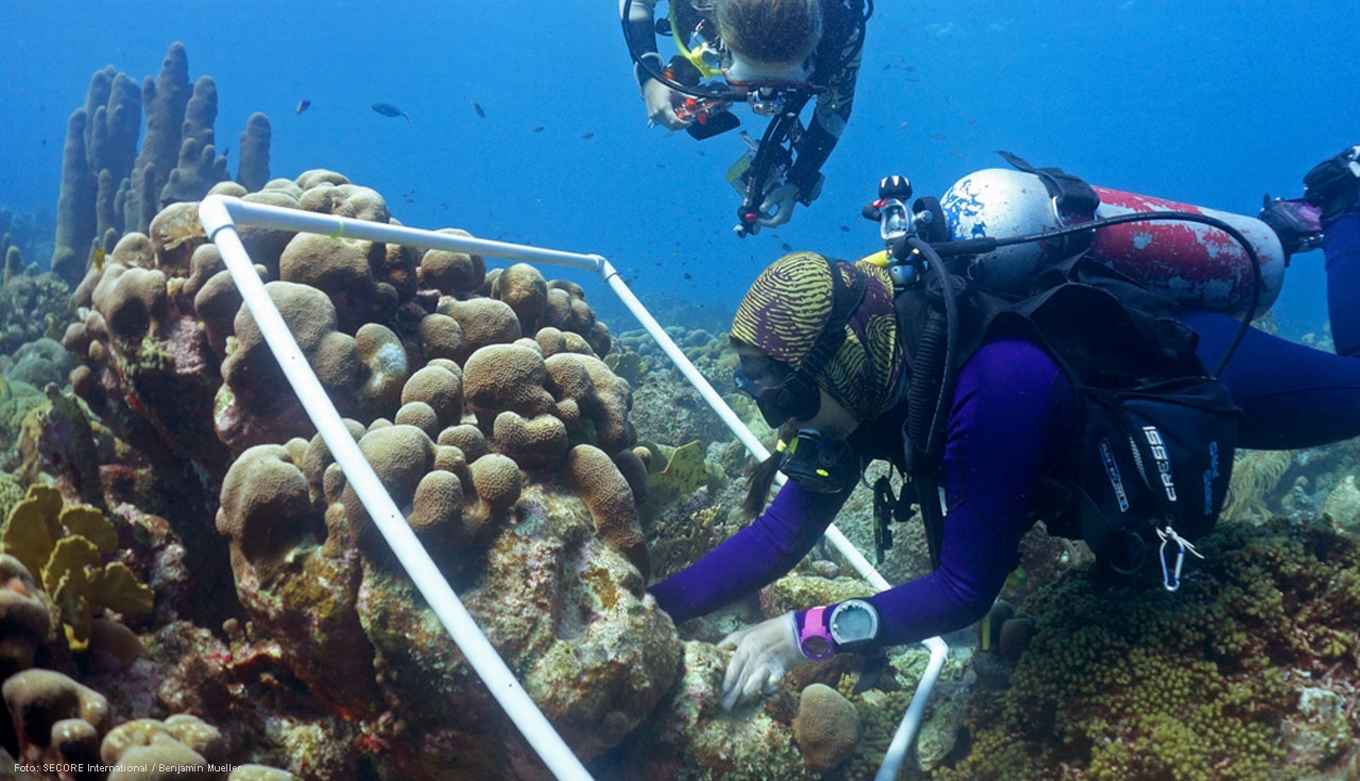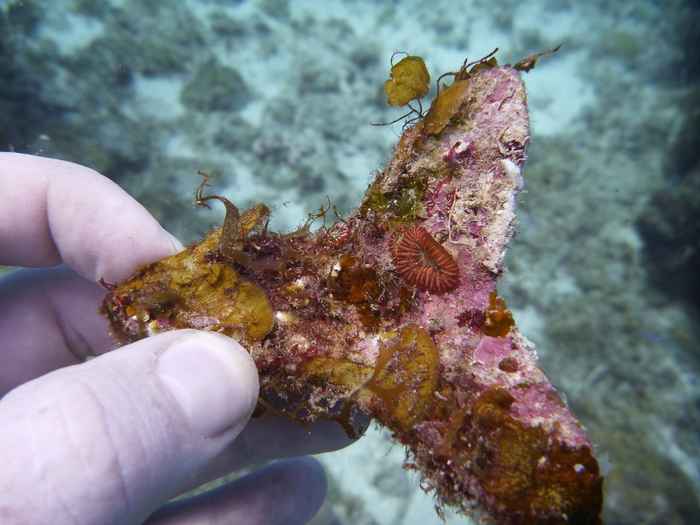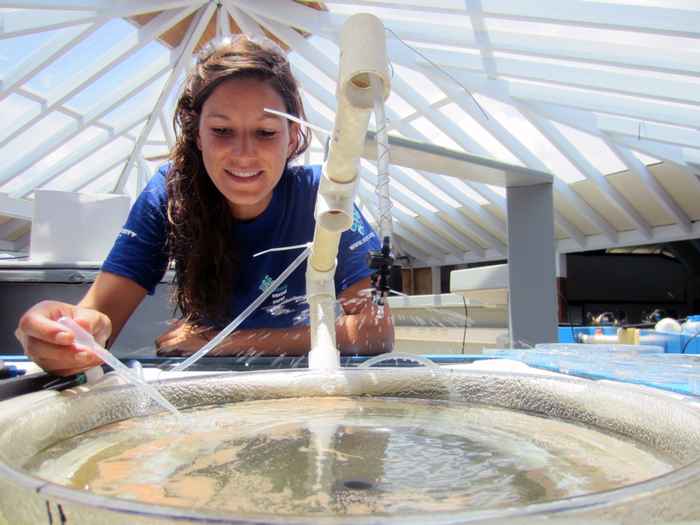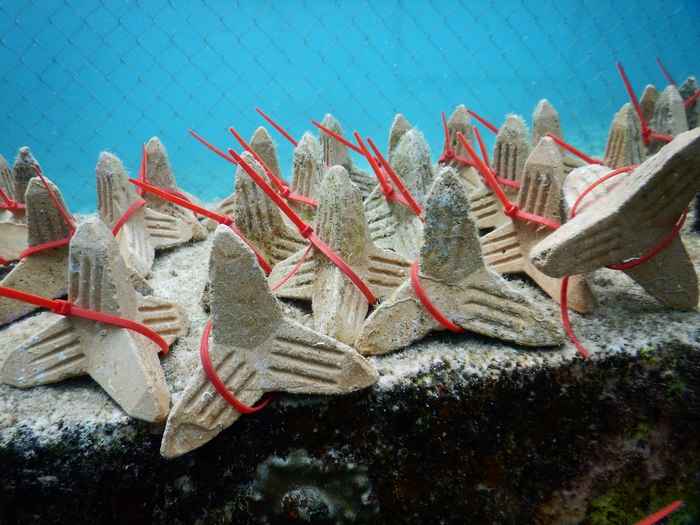Sowing corals
New approach paves the way for large-scale coral reef restoration
3 January 2018

The aim of transplanting corals on degraded reefs is to increase coral cover and promote structural habitats. Until now, actual restoration has been done manually by divers who had to attach each coral, whether a fragment or a coral recruit settled on a substrate, individually. This is a costly and time-consuming approach. For instance, transplanting 10,000 individual corals on one hectare using common methods has until now required several hundred to a few thousand man-hours, whereas reef degradation occurs at a scale of hundreds and thousands of square kilometers.
‘If we want restoration to play a more meaningful role in coral reef conservation, we need to think in new ways. Our sowing approach is an important step towards reaching this goal since it will allow the handling of large numbers of corals in a very short space of time at significantly lower costs’, says Dr Dirk Petersen, project leader and executive director of SECORE International, a conservation organisation for the protection and restoration of coral reefs which employs a number of the researchers involved in the study.

Sowing coral larvae
In the new sowing approach, coral larvae are settled on specifically designed substrates that are self-stabilised and attach to the reef via natural processes. After a few weeks to months these so-called ‘Seeding Units’ (i.e., substrates together with initial coral polyps) are sown on the reef by simply wedging them in crevices rather than requiring manual attachment. ‘Sowing the same number of corals could be achieved in less than 50 man-hours, a time saving of over 90 per cent. Additionally, material costs could be reduced by up to one third, representing a substantial advance for future restoration work’, says SECORE’s research director Dr Margaret Miller.

Sexual coral reproduction and genetic diversity
On Curaçao, the team collected coral larvae released by colonies of golf ball corals (Favia fragum). ‘Shortly after collection, we settled the coral larvae on specially designed tetrapod-shaped substrates made of cement’, explains Valérie Chamberland, who led the field research for this study on Curaçao as part of her PhD work at IBED.
Working with sexually propagated corals maintains genetic diversity. Different gene combinations, so-called genotypes, arise within the population by recombination―the reshuffling of the genetic characteristics of parents among their offspring. New genetic combinations may then equip some coral offspring with better capabilities than their struggling parents to cope with future conditions. ‘This is of vital importance for any coral species in the face of climate change. In this way, we may get corals that, for example, are more resilient to raising water temperatures’, says Petersen.

Survival rates Seeding Units
Three weeks later the settled coral larvae had turned into initial coral polyps and the units were sown on the reef in front of the Curaçao Sea Aquarium. ‘The specific shape of the tetrapod substrates allowed us to simply wedge the Seeding Units into natural crevices of the reef. Most Seeding Units were stable within a few weeks, either secured in crevices or naturally cemented on the reef’s framework’, says Chamberland.
The design of the substrates not only promotes the attachment on the reef, but is also intended to enhance the survival of the coral settlers. ‘The different orientations of the Seeding Units’ surfaces and their integrated grooves create micro-habitats that likely reduce competition and predation affecting the young and very fragile corals compared to when larvae settle directly on the reef. This is crucial, as our results show that the early post-settlement life stage is the bottleneck for the survival of young corals’, says Petersen.
Advancing the sowing approach
The research team is now working on an improvement of the sowing approach. The substrate design is optimised to further increase coral settler survival and growth and to be able cover a wider range of reef habitats. The processing of 50,000 to 100,000 substrates within a single location and spawning season will also involve major logistical and engineering challenges. 'We are currently working together with our partners to implement industrial manufacture of the tetrapod substrates in large numbers at significantly lower costs’, says Petersen. ‘If we are able to combine our new sowing approach with more effective coral larvae rearing techniques, which we are developing right now, costs of reef restoration could become comparable to the costs of existing mangrove and salt marsh restoration efforts.’
Publication details
Valérie F Chamberland, Dirk Petersen, James R Guest, Udo Petersen, Mike Brittsan, Mark JA Vermeij: ‘New Seeding Approach Reduces Costs and Time to Outplant Sexually Propagated Corals for Reef Restoration’ in: Scientific Reports. doi:10.1038/s41598-017-17555-z